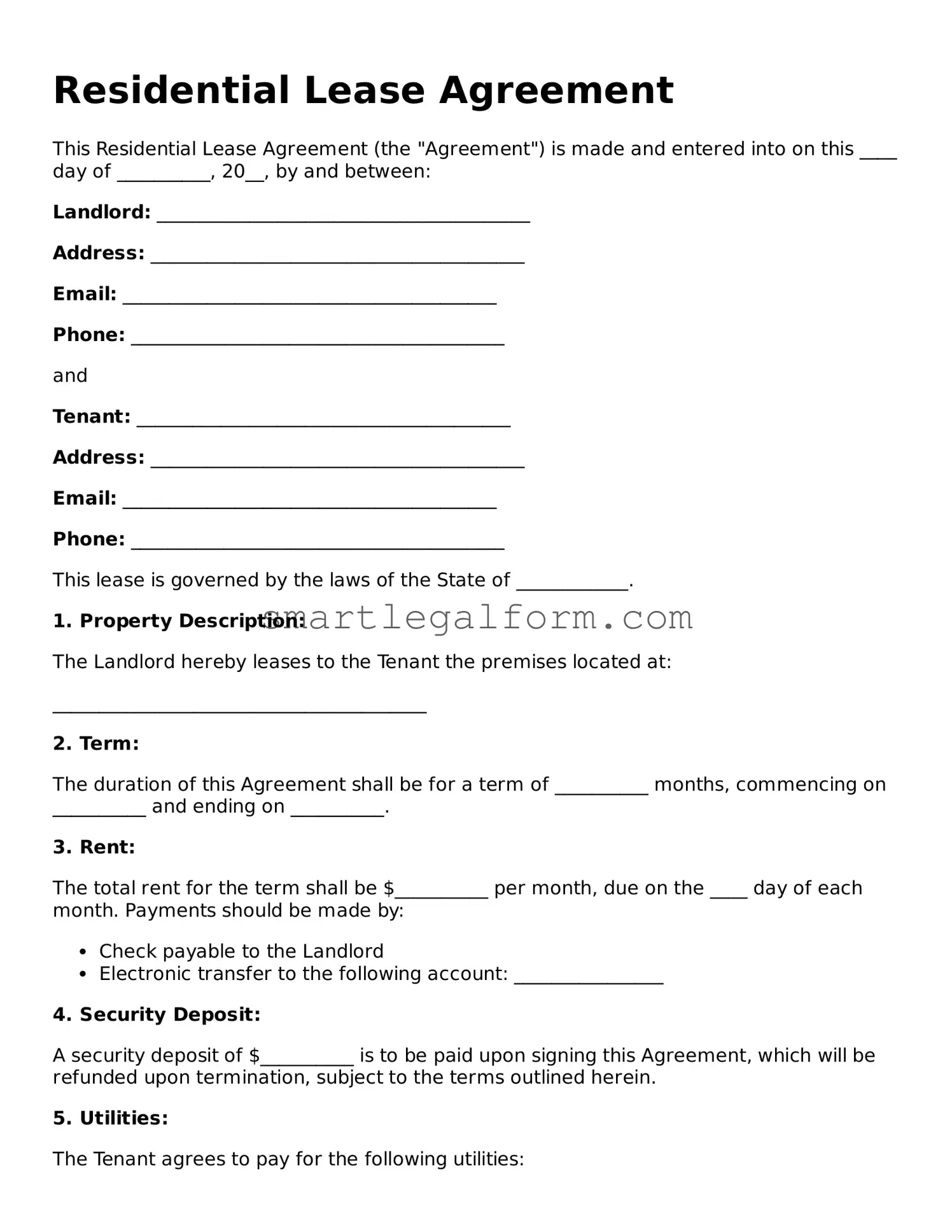Residential Lease Agreement
This Residential Lease Agreement (the "Agreement") is made and entered into on this ____ day of __________, 20__, by and between:
Landlord: ________________________________________
Address: ________________________________________
Email: ________________________________________
Phone: ________________________________________
and
Tenant: ________________________________________
Address: ________________________________________
Email: ________________________________________
Phone: ________________________________________
This lease is governed by the laws of the State of ____________.
1. Property Description:
The Landlord hereby leases to the Tenant the premises located at:
________________________________________
2. Term:
The duration of this Agreement shall be for a term of __________ months, commencing on __________ and ending on __________.
3. Rent:
The total rent for the term shall be $__________ per month, due on the ____ day of each month. Payments should be made by:
- Check payable to the Landlord
- Electronic transfer to the following account: ________________
4. Security Deposit:
A security deposit of $__________ is to be paid upon signing this Agreement, which will be refunded upon termination, subject to the terms outlined herein.
5. Utilities:
The Tenant agrees to pay for the following utilities:
- Electricity
- Water
- Gas
- Internet/Cable
6. Maintenance and Repairs:
The Tenant shall keep the premises in good condition and shall notify the Landlord of any needed repairs. The Landlord will be responsible for all repairs except those caused by Tenant’s negligence.
7. Termination:
- Either party may terminate this Agreement with a written notice of ____ days prior to the intended termination date.
- The Tenant must leave the premises in its original condition, allowing for normal wear and tear.
8. Governing Law:
This Agreement shall be construed in accordance with the laws of the State of ____________.
IN WITNESS WHEREOF, the parties hereto have executed this Residential Lease Agreement as of the day and year first above written.
Landlord Signature: ____________________________ Date: _______________
Tenant Signature: ____________________________ Date: _______________
